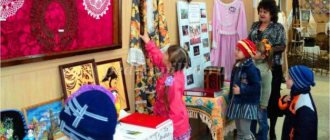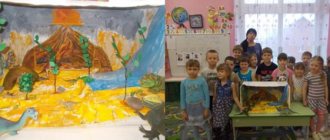The sound culture of speech is established during the period when a child learns to speak. At the age of three to seven years, children master pronunciation, intensively fill their vocabulary, discover the grammatical structure of speech, and learn to speak coherently. For each child, these processes are accompanied by unequal success. If speech disorders are not eliminated in childhood, then in subsequent years it is much more difficult to overcome them.
The concept of sound culture of speech
Speech is a complex function that involves many parts of the body. The development of speech in preschool children involves not only direct “speaking” and comprehension of what is being said. What sound production and pronunciation will be depends on how developed the speech apparatus is and how the respiratory muscles work.
Accordingly, the sound culture of speech is a multifaceted concept, including pure pronunciation, sound characteristics, speech breathing, meaningfulness of statements, and general expressiveness of speech.
Speech hearing is closely related to the work of the articulatory apparatus and respiratory muscles. Children with impaired hearing - or simply absent-minded and inattentive - find it difficult to catch and reproduce complex sounds, to ensure meaningful, expressive speech. Therefore, when talking about the education of sound culture, they necessarily include the development of speech hearing.
Features of the formation of sound culture of speech of preschool children
A child’s speech is formed based on the example of verbal communication of the adults who surround him. For some parents and grandparents, it becomes a discovery that even with a baby it is inadmissible to lisp and adapt to baby talk. From the first days of life, children should hear gentle, but at the same time correct speech in terms of grammar and pronunciation. Only in this way will the development of coherent speech in preschool children occur naturally and fully.
Starting from the age of three, a preschooler will begin to repeat after adults word by word. It is extremely important that his onomatopoeia is based on distinct, correctly pronounced phrases.
Sound pronunciation
The sound aspect of speech in preschool children changes every month due to the natural improvement of the speech apparatus.
Children 3-4 years old have a characteristic speech feature that consists in softening almost all words. Most children do not yet pronounce the sound R, hissing Zh, Ch, Sh, Shch.
There is a frequent replacement of more complex sounds (so-called back-lingual) with simple (front-lingual) at the beginning of a word. Follow the movement of your tongue: it is much easier to pronounce “shuk” instead of beetle, “dolova” rather than head, “Tatya” instead of Katya.
Several consonant sounds in a row completely turn children’s phrases into new lexical inventions.
By the age of five, most children get rid of general softening. The pronunciation of words is still unstable, but almost all sounds are being mastered. Another thing is that the child does not always manage to use them appropriately. To rejoice that R, Zh and other insidious sounds have already succumbed, the preschooler uses them, replacing the quite loyal pronunciation L, T, S. For this reason, you can hear from the child “rapka” (paw), “zhuby” (teeth) and similar word creation.
Children of senior preschool age, in general, pronounce all sounds clearly, unless there are functional deviations (lisp, stuttering), the elimination of which requires special speech therapy assistance. But in six-year-olds, the rearrangement of sounds or syllables, as well as the distortion of words familiar to the immediate circle (“meat grinder”, “velisaped”) can become fixed. The reason may be either imitation, undeveloped speech hearing, or weak voluntary attention.
We recommend that you read:
- How to teach a child to pronounce the letter R.
- Speech therapy exercises for the sound L.
- Making whistling sounds.
Characteristics of speech expressiveness
The formation of sound expressiveness of speech occurs when the preschooler’s statements acquire coherence. Children grasp the melody of pronunciation of sentences before they begin to speak. Intonation, logical stress in a sentence comes when the child begins to speak meaningfully.
Elements of speech expressiveness are an important component of sound culture. Intonation and clarity of pronunciation not only add beauty to the sound. The delivery of the meaning of the message and the understanding of the content by the listener depend on them. The development of expressive speech in children can be ensured by reciting poetry and participating in theatrical performances.
Pace and speech breathing
The peculiarities of assimilation of the sound side of speech by preschoolers are also due to the fact that the child’s body has a poorly developed system of respiratory muscles and respiratory tract.
Therefore, the child may not finish words, skip complex sound combinations, and speak excessively hastily. At the same time, speech sounds excited or loud.
It is important to develop your child's breathing muscles by practicing deep inhalations and exhalations.
Exercises where you have to blow for as long as possible are useful. Blowing soap bubbles, blowing on a dandelion ball, or a competition to see who can blow a checker further on a chessboard are suitable. Such simple games develop the speech breathing of a preschooler.
Features of the acquisition of phonetic culture of language by children in senior preschool age
At the age of 5 years, the formation of correct pronunciation is completed. Normally, all children should learn to clearly pronounce all sounds in words and sentences. No substitution on a physiological basis: a sound that is simpler in articulation is used instead of a more complex one - it should not remain, but this does not always happen. Some children have various pronunciation defects associated with impaired structure and mobility of the articulatory apparatus or underdevelopment of phonemic hearing. In general, after 5 years, most children begin to develop a conscious orientation in the sound composition of words. If earlier language was only a means of communication, now it becomes an object of perception and research. The first attempts to consciously isolate a sound from a word, and then determine the exact location of the sound, are a necessary condition for learning to read and write. Extracting sound from a word occurs spontaneously in preschoolers, while complex forms of sound analysis need to be specially taught. By the age of five or six, with proper training, a child can not only master the determination of the position of a sound in a word - the beginning, middle, end of a word - and positional sound analysis, which involves determining the exact place of a sound in a word, but also name the sounds in the order in which they occur in a word.
By the age of 6, children's pronunciation becomes quite normal, and work is done to improve articulation. Children can easily pronounce words of any structure and use polysyllabic words in a sentence. Six-year-old children can clearly distinguish by ear all the sounds of their native language. Including those with similar acoustic characteristics: dull and voiced, hard and soft. The inability to distinguish pairs of sounds by sound and sonority usually indicates a lack of physical hearing. The ability to recognize sounds in a stream of speech, subtract them from a word, and compose a sequence of sounds in a word develops; this is the development of the skills of sound analysis of words. It should be noted that a large role in the development of these skills belongs to adults who work with children in this direction. It could even be argued that without adult input, these much-needed skills may not develop at all. The vocabulary of preschoolers at the age of six or seven years is quite large and can no longer be accurately counted. Six-year-old children begin to understand words with figurative meanings (time is creeping, losing your head). When children begin purposeful preparation for school, the first scientific terms appear in their active vocabulary: Sound, letter, sentence, number. At first it is very difficult to separate the concepts of sound and letter. When you introduce these terms, try to use them correctly yourself and make sure your child does the same.
Education of sound culture of speech in preschool children
What kind of speech a preschooler will have depends to a large extent on the attentive attitude of parents and educators to this issue. A culture of speech must be instilled and nurtured.
The first thing that adults need to observe is to set an example for the child with their competent speech and culture of verbal communication.
Secondly, parents are obliged to closely monitor their child’s progress in mastering their native language. What is important here is not being touched by children's pronunciation, but careful tips on how to use words correctly, an incentive to formulate a narrative sentence. It is necessary to systematically train in the pronunciation of difficult sounds in order to prevent possible speech disorders.
Formation of correct pronunciation
Parents should focus on age-related norms for the formation of pure pronunciation. Having passed the 5-year mark, the child must learn to pronounce all sounds. Already approaching this age, adults need to stimulate the development of their auditory attention as a preventive measure for possible speech problems in their child. This can be done everywhere in a playful way:
- Invite your child to close his eyes and listen to the sounds around him. Then ask what he heard.
- Practice telling fairy tales together, imitating the voices of fairy-tale characters.
- Learn to isolate sounds in a word: an adult names words, and a preschooler determines whether it contains a designated sound.
It is also easy to perform articulation gymnastics. Such tongue exercises as “Spatula”, “Needle”, “Slide”, “Clock”, “Horse” are known to everyone. These articulatory movements are simple to perform, but their effectiveness has been proven by many years of practice.
Diction and expressiveness training
The formation of diction and expressiveness is effectively promoted by memorizing and reciting small, entertaining poems. Children love funny rhyming lines. These are accessible and simple techniques for developing speech in children 3-4 years old. Kids recite poems with inspiration, trying to repeat all the accents they heard in their mother or grandmother’s recitation. Moreover, children's quatrains often include simultaneously narrative, interrogative and incentive sentences. As in this example:
In addition to training intonation expressiveness, such recitations are a fertile environment for automating sounds that are difficult for a preschooler.
Theatrical activities, which are easy to organize at home, also contribute to the development of speech expressiveness. Children love to listen to their favorite fairy tales almost every day. They know the content exactly and carefully ensure that the narrator does not miss any episodes.
It's time to assign the preschooler one of the roles that is attractive to him. Even without additional guidance, the child will try to portray the character of the hero, using the appropriate tempo and tone of speech.
Didactic games
Phonemic awareness and the ability to recognize non-speech sounds can be trained using the Orchestra game. Children stand with their backs to the teacher, who makes sounds using various instruments. At first, it is advisable to give one instrument for recognition. For example, a ratchet. Then simultaneously offer 2 sounds - a rattle and a drum. Gradually increase the number of sounds. Children must say what musical instruments they heard in the orchestra.
Didactic games are suitable for differentiating sounds, in which you need to distribute given sounds into 2 groups. For example, in the game “Colorful Baskets,” the speech therapist pronounces the names of objects and phenomena, and children pick up an orange basket if they hear one sound in a word, and a yellow basket if they hear another. Similar tasks can be implemented by distributing words with the required sounds into different houses, cabinets, pots, etc.


